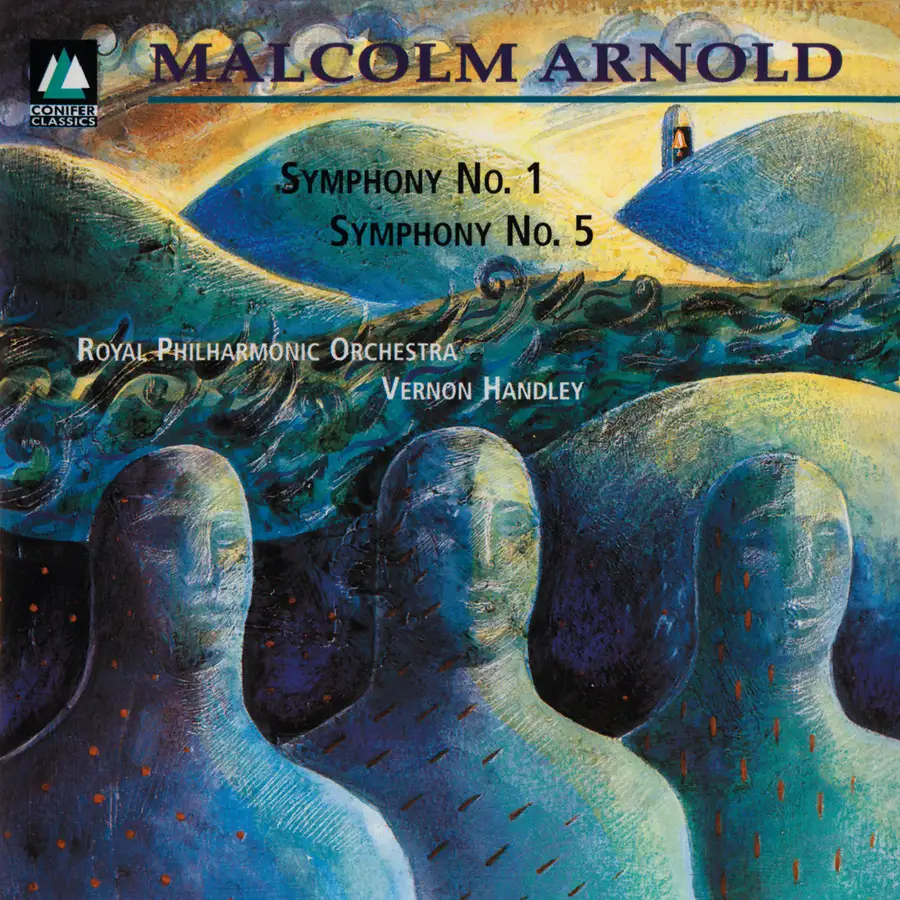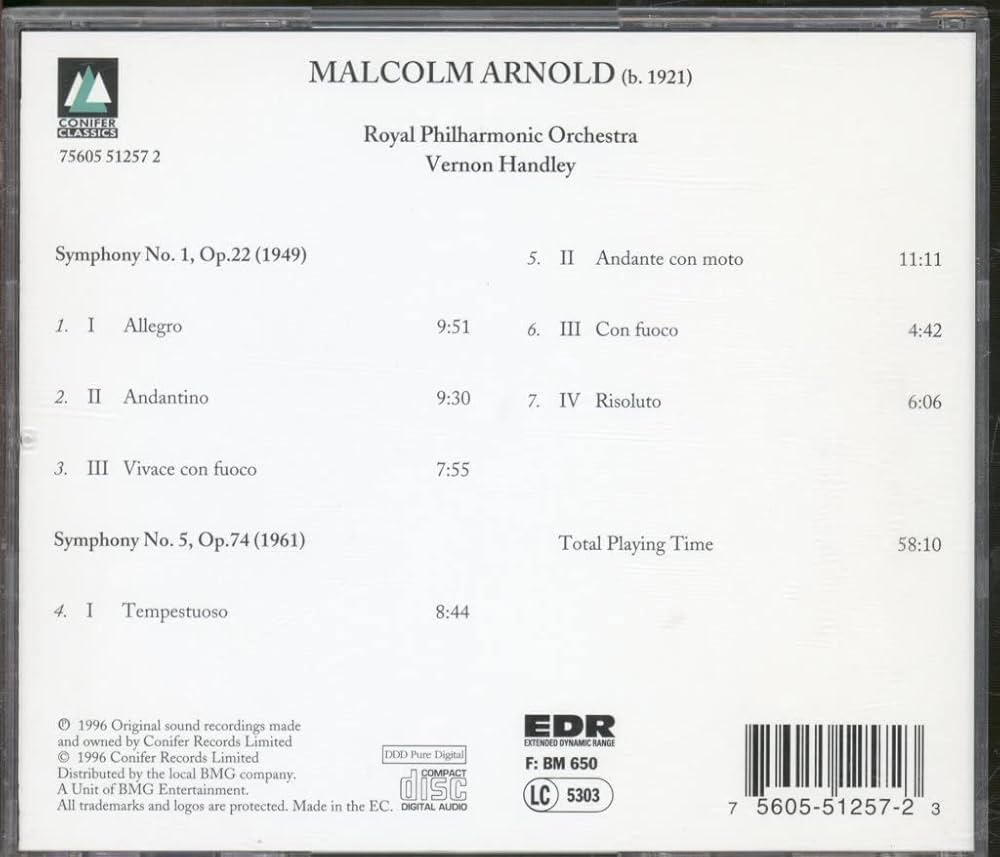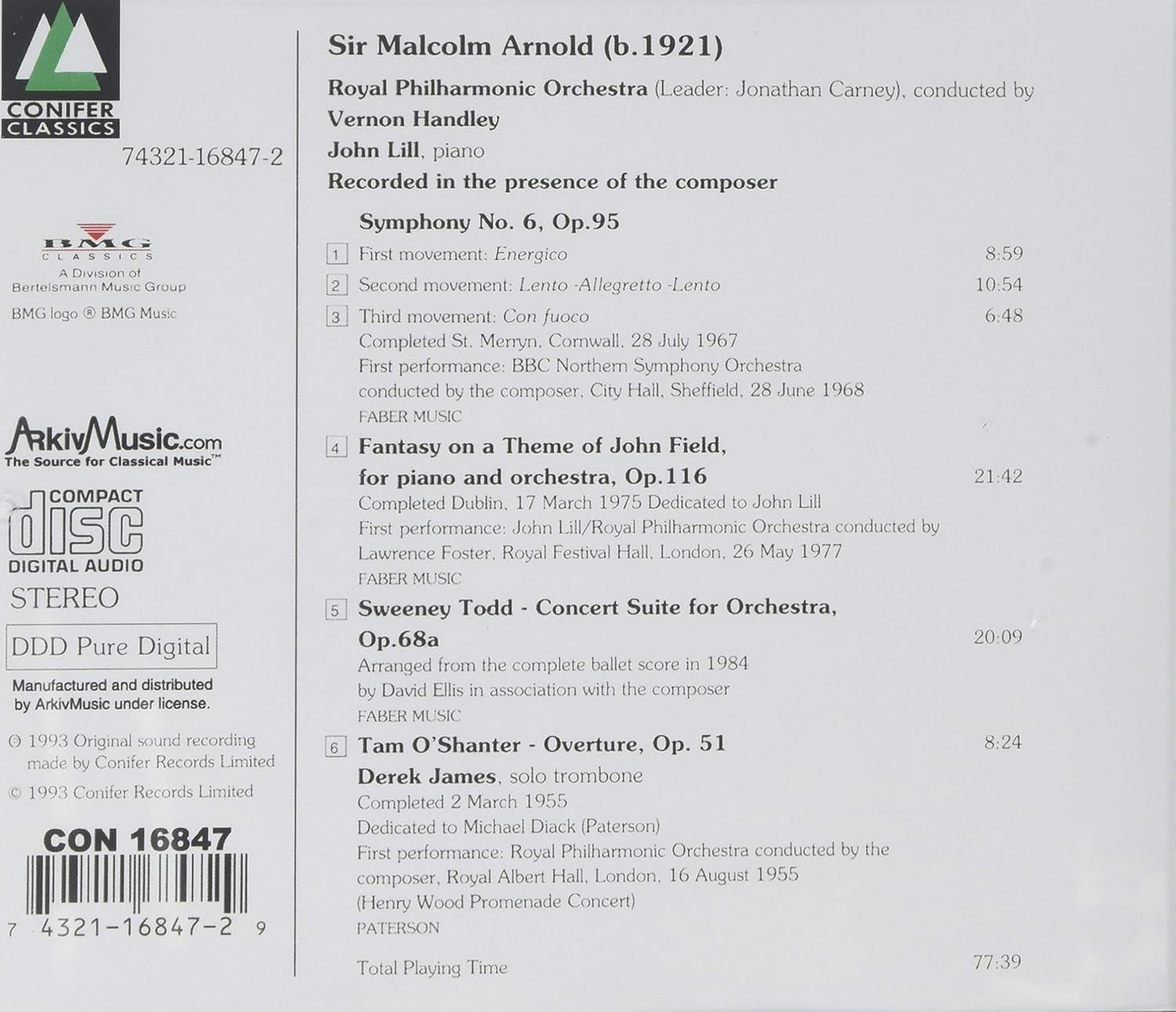Malcolm Arnold's Symphony no. 5 is one of the composer's more popular in the genre. Strange too, as I don't find it to be his 'easiest' symphony.
As continued from his earlier works, Arnold deploys a uniquely approachable brand of dissonance married with filmic consonance.
Certainly this aspect is heard in the first movement of his Fifth Symphony. While the winds and strings are given tempestuous rhythms and strident harmonies, a lilting portion interrupts filled with harp, celesta, glockenspiel, and chimes. I love, love, love Arnold's use of pitched percussion, taking me along with his music no matter what else is going on.
The opening goes even deeper when the listener realizes the many solo instrument features which come and go are memorials for friends of Malcolm Arnold who had recently passed.
A sumptuous, swooning string ballad opens the second movement, almost as if it is a popular song. Pairings of flute and bassoon, and later oboe and trumpet, follow before the mood gets much darker. Here, the brass really get to come into their own, and Arnold doesn't hold back, asking the players to play many glissandos to make for a rather eerie effect. Of course, the opening returns, landing the listener on a peaceful, cinematic close.
A rhythmically off-kilter Scherzo follows, full of endless starts and stops. Layers of instruments come and go in an almost pointillistic fashion. A walking bass figure and other elements hint at jazz, but just ever so slight nods from Arnold.
A not very jolly march opens the fourth movement, although the piccolos do their best to raise the spirits of the band, while the brass and percussion prefer a bit more menace to their sound. A hymn concludes the movement, one reminiscent of the second movement ballad which bursts with Hollywood glamour.
Arnold's Fifth Symphony keeps the listener guessing between his populous sounds and his own brand of modernism. For me, I think I enjoy his disparate musical ideas, keeping me captivated throughout its runtime. No one would accuse Malcolm Arnold of being boring or calculated in his approach to music, and I like that spontaneous aspect of his musical personality in the symphonic genre.
Symphony no. 6 isn't quick to show its cards. Incessant string pizzicati plays opposite a sustained section of instruments while another section noodles around with occasional stabs of brass. It is a prime example of how Arnold layers the orchestral sections.
While the melody making of the first movement is angular, I never find it off-putting, and Arnold always keeps his music locked into a tonal landscape. One could imagine a soundtrack to The Planet of the Apes, or some such film of its era.
Despite such a pronouncement, the first two movements of his Sixth Symphony are desolate affairs. The first is punchier rhythmically and orchestrally, while the second is more atmospheric in a lonely, sometimes eerie manner. Moving between the two movements, the listener is saddled with a rather heavy mood which doesn't let up all that much.
If I found a hint of jazz in Symphony no. 5's third movement, the middle section of the second movement of Symphony no. 6 hides nothing of Arnold's interest in jazz idioms. A rhythm section backs a horn and bass groove, while the winds wail against the back drop. It is an interesting change from what came before, but the slightest bit of lightheartedness is welcome at this point in the work.
The third and last movement seems completely unrelated to what came before, developing a high-flying Western soundtrack to throw the symphony off into an upbeat conclusion. While I didn't mind the diversion to more spirited realms, its relation to what came before is beyond my comprehension. Brass fanfares are underscored by chugging strings, where the momentum rarely flags, tossing off the final notes in glorious fashion.
My original pronouncement between these two symphonies was - if you liked one, you would probably like the other. After all, they both share a common musical language from Arnold. However, after spending some time with these two works, I may have to modify my statement. The Sixth Symphony is dour and almost oppressive up until its final movement, one which sounds completely unrelated to the work it is attached to, whereas the Fifth Symphony exudes completely different vibes for a different whole.
Still, I remain captivated by Malcolm Arnold's symphonic voice, and his quirks, which can sound like annoyances in my descriptions, are some of my favorite moments.
Works
Symphony 5, op. 74 (30.41)
Symphony 6, op. 95 (26.51)
Performers
Royal Philharmonic Orchestra
Vernon Handley, conductor
Label: Conifer
Year: 1993, 1995; 2006
Total Timing: 57.44
Find more Arnold recordings HERE!




No comments:
Post a Comment